Happy Birthday To Vera Rubin: The Mother Of Our Dark Matter Universe










Happy Birthday To Vera Rubin: The Mother Of Our Dark Matter Universe
“Dark matter should drive the formation of structure on all large scales, with every galaxy consisting of a large, diffuse halo of dark matter that is far less dense and more diffuse than the normal matter. While the normal matter clumps and clusters together, since it can stick together and interact, dark matter simply passes through both itself and normal matter. Without dark matter, the Universe wouldn’t match our observations.
But this branch of science truly got its start with the revolutionary work of Vera Rubin. While many, including me, will deride the Nobel committee for snubbing her revolutionary science, she truly did change the Universe. On what would have been her 91st birthday, remember her in her own words:
“Don’t let anyone keep you down for silly reasons such as who you are, and don’t worry about prizes and fame. The real prize is finding something new out there.”
50 years later, we’re still investigating the mystery Vera Rubin uncovered. May there always be more to learn.”
Today, dark matter is practically accepted as a given, owing to an overwhelming suite of evidence that points to its existence. Without adding dark matter as an ingredient, we simply can’t explain the Universe, from gravitational lensing to large-scale structure to Big Bang nucleosynthesis to the cosmic microwave background and much more. But throughout the 1930s, 40s and 50s, no one would even give the idea a second thought. Until, that is, Vera Rubin came along and changed everything.
Today would have been her 91st birthday, and it’s about time you got the scientific story to celebrate what she taught us all.
More Posts from Ocrim1967 and Others




Ψ ♥ For more interesting psychology posts like this, follow @mypsychology ♥ Ψ

A Surprising Surge at Vavilov Ice Cap
After moving quite slowly for decades, the outlet glacier of Vavilov Ice Cap began sliding dozens of times faster than is typical. The ice moved fast enough for the fan-shaped edge of the glacier to protrude from an ice cap on October Revolution Island and spread widely across the Kara Sea. The Landsat images above were acquired on July 1, 2013, June 18, 2015, and June 24, 2018, respectively.
“The fact that an apparently stable, cold-based glacier suddenly went from moving 20 meters per year to 20 meters per day was extremely unusual, perhaps unprecedented,” said University of Colorado Boulder glaciologist Michael Willis. “The numbers here are simply nuts. Before this happened, as far as I knew, cold-based glaciers simply didn’t do that…couldn’t do that.”
Willis and his colleagues are still piecing together what triggered such a dramatic surge. They suspect that marine sediments immediately offshore are unusually slippery, perhaps containing clay. Also, water must have somehow found its way under the land-based part of the glacier, reducing friction and priming the ice to slide.
Full story here: go.nasa.gov/2Z931lc
Make sure to follow us on Tumblr for your regular dose of space: http://nasa.tumblr.com
I love flowers 💐❤️














NASA’s New Planet Hunter Reveals a Sky Full of Stars

NASA’s newest planet-hunting satellite — the Transiting Exoplanet Survey Satellite, or TESS for short — has just released its first science image using all of its cameras to capture a huge swath of the sky! TESS is NASA’s next step in the search for planets outside our solar system, called exoplanets.

This spectacular image, the first released using all four of TESS’ cameras, shows the satellite’s full field of view. It captures parts of a dozen constellations, from Capricornus (the Sea Goat) to Pictor (the Painter’s Easel) — though it might be hard to find familiar constellations among all these stars! The image even includes the Large and Small Magellanic Clouds, our galaxy’s two largest companion galaxies.
The science community calls this image “first light,” but don’t let that fool you — TESS has been seeing light since it launched in April. A first light image like this is released to show off the first science-quality image taken after a mission starts collecting science data, highlighting a spacecraft’s capabilities.

TESS has been busy since it launched from NASA’s Kennedy Space Center in Cape Canaveral, Florida. First TESS needed to get into position, which required a push from the Moon. After nearly a month in space, the satellite passed about 5,000 miles from the Moon, whose gravity gave it the boost it needed to get into a special orbit that will keep it stable and maximize its view of the sky.

During those first few weeks, we also got a sneak peek of the sky through one of TESS’s four cameras. This test image captured over 200,000 stars in just two seconds! The spacecraft was pointed toward the constellation Centaurus when it snapped this picture. The bright star Beta Centauri is visible at the lower left edge, and the edge of the Coalsack Nebula is in the right upper corner.

After settling into orbit, scientists ran a number of checks on TESS, including testing its ability to collect a set of stable images over a prolonged period of time. TESS not only proved its ability to perform this task, it also got a surprise! A comet named C/2018 N1 passed through TESS’s cameras for about 17 hours in July.
The images show a treasure trove of cosmic curiosities. There are some stars whose brightness changes over time and asteroids visible as small moving white dots. You can even see an arc of stray light from Mars, which is located outside the image, moving across the screen.

Now that TESS has settled into orbit and has been thoroughly tested, it’s digging into its main mission of finding planets around other stars. How will it spot something as tiny and faint as a planet trillions of miles away? The trick is to look at the star!
So far, most of the exoplanets we’ve found were detected by looking for tiny dips in the brightness of their host stars. These dips are caused by the planet passing between us and its star – an event called a transit. Over its first two years, TESS will stare at 200,000 of the nearest and brightest stars in the sky to look for transits to identify stars with planets.

TESS will be building on the legacy of NASA’s Kepler spacecraft, which also used transits to find exoplanets. TESS’s target stars are about 10 times closer than Kepler’s, so they’ll tend to be brighter. Because they’re closer and brighter, TESS’s target stars will be ideal candidates for follow-up studies with current and future observatories.

TESS is challenging over 200,000 of our stellar neighbors to a staring contest! Who knows what new amazing planets we’ll find?
The TESS mission is led by MIT and came together with the help of many different partners. You can keep up with the latest from the TESS mission by following mission updates.
Make sure to follow us on Tumblr for your regular dose of space: http://nasa.tumblr.com.










7 Fascinating Facts About 2019’s Only Total Solar Eclipse
“3.) Optimally situated viewers will experience 4 minutes and 33 seconds of totality. With Earth near aphelion and the Moon near perigee, it’s nearly twice the duration of 2017’s eclipse.”
On July 2, 2019, the world will experience a total solar eclipse: the only one of the year. Unlike the famous 2017 solar eclipse which spanned the continental United States, this year’s total solar eclipse occurs almost exactly coincident with both lunar perigee, where the Moon is closest to Earth, and solar aphelion, where the Sun is at its farthest point from Earth. July 2nd is just 2 days before our annual aphelion and 3 days before our monthly perigee, meaning that we’ll get 4 minutes and 33 seconds of totality during maximum eclipse: nearly twice as long as 2017′s maximum totality and the longest total solar eclipse we’ll experience until 2027.
What will we learn? What will we see? And how can you observe it from anywhere in the world? Find out these and more amazing facts before the eclipse passes!





Study Tips Based on Your Hogwarts House
Just finished rewatching all 8 of the Harry Potter films last week… and I thought why not make my first graphic related to it? So, here’s study tips for each of the Hogwarts houses! I know some of these doesn’t apply to everyone, but I had really fun time making this :) Hope this helps!
I was wondering if you could go in depth, at least to a degree about how incredibly dense objects have strong enough gravity to distort light. To me that's one of the wildest concepts I can imagine, not that I expect you to be all knowing but maybe you've got a good article or something? I don't recall if you've ever made posts about the theory of relativity. Sorry for the long ask!
Well, I know only the basics, things I study in my free time, however, I can try to explain. The distortion of space-time is described by Einstein’s Theory of General Reality. The more massive an object, the more its curvature will be in the space-time fabric.


This distortion in light is known as a gravitational lensing. The gravitational lensing is formed due to a space-time distortion caused by the presence of a large mass body between a distant light source and an observer.


These distortions are widely observed through globular clusters.
Since the amount of lensing depends on the total mass of the cluster, gravitational lensing can be used to ‘weigh’ clusters. This has considerably improved our understanding of the distribution of the ‘hidden’ dark matter in galaxy clusters and hence in the Universe as a whole. The effect of gravitational lensing also allowed a first step towards revealing the mystery of the dark energy.


As gravitational lenses function as magnification glasses it is possible to use them to study distant galaxies from the early Universe, which otherwise would be impossible to see.

Gravitational lensing happens on all scales – the gravitational field of galaxies and clusters of galaxies can lens light, but so can smaller objects such as stars and planets. Even the mass of our own bodies will lens light passing near us a tiny bit, although the effect is too small to ever measure.
Hurricanes Have No Place to Hide, Thanks to Better Satellite Forecasts

If you’ve ever looked at a hurricane forecast, you’re probably familiar with “cones of uncertainty,” the funnel-shaped maps showing a hurricane’s predicted path. Thirty years ago, a hurricane forecast five days before it made landfall might have a cone of uncertainty covering most of the East Coast. The result? A great deal of uncertainty about who should evacuate, where it was safe to go, and where to station emergency responders and their equipment.

Over the years, hurricane forecasters have succeeded in shrinking the cone of uncertainty for hurricane tracks, with the help of data from satellites. Polar-orbiting satellites, which fly nearly directly above the North and South Poles, are especially important in helping cut down on forecast error.

The orbiting electronic eyeballs key to these improvements: the Joint Polar Satellite System (JPSS) fleet. A collaborative effort between NOAA and NASA, the satellites circle Earth, taking crucial measurements that inform the global, regional and specialized forecast models that have been so critical to hurricane track forecasts.

The forecast successes keep rolling in. From Hurricanes Harvey, Irma and Maria in 2017 through Hurricanes Florence and Michael in 2018, improved forecasts helped manage coastlines, which translated into countless lives and property saved. In September 2018, with the help of this data, forecasters knew a week ahead of time where and when Hurricane Florence would hit. Early warnings were precise enough that emergency planners could order evacuations in time — with minimal road clogging. The evacuations that did not have to take place, where residents remained safe from the hurricane’s fury, were equally valuable.

The satellite benefits come even after the storms make landfall. Using satellite data, scientists and forecasters monitor flooding and even power outages. Satellite imagery helped track power outages in Puerto Rico after Hurricane Maria and in the Key West area after Hurricane Irma, which gave relief workers information about where the power grid was restored – and which regions still lacked electricity.

Flood maps showed the huge extent of flooding from Hurricane Harvey and were used for weeks after the storm to monitor changes and speed up recovery decisions and the deployment of aid and relief teams.

As the 2019 Atlantic hurricane season kicks off, the JPSS satellites, NOAA-20 and Suomi-NPP, are ready to track hurricanes and tropical cyclones as they form, intensify and travel across the ocean – our eyes in the sky for severe storms.
For more about JPSS, follow @JPSSProgram on Twitter and facebook.com/JPSS.Program, or @NOAASatellites on Twitter and facebook.com/NOAASatellites.
Make sure to follow us on Tumblr for your regular dose of space: http://nasa.tumblr.com.

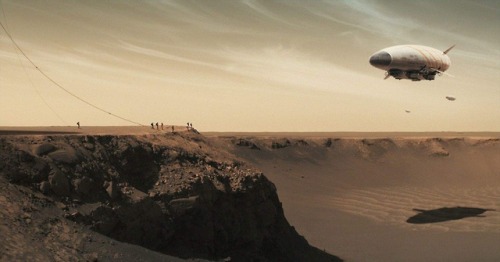
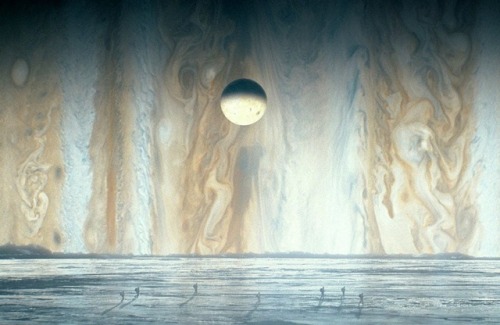

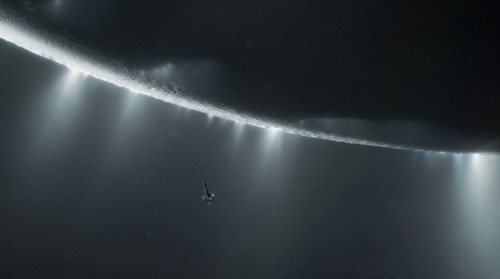
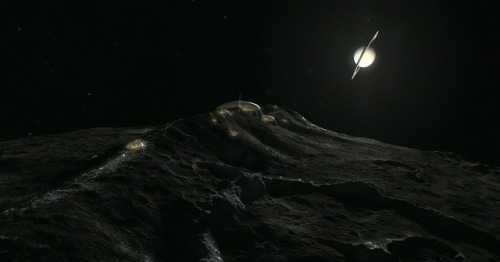
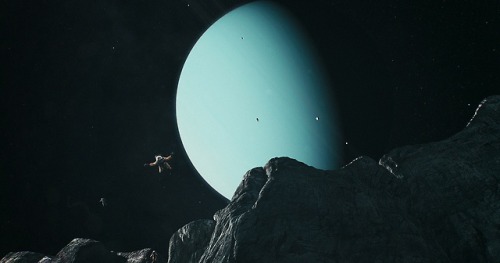
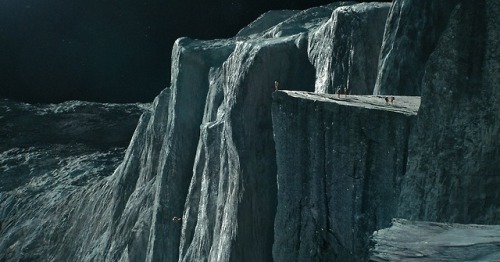

Will we one day explore the worlds of our solar system? How long will this take?
We have a diversity of worlds in our solar system. Majestic places…
Imagine being able to visit Mars and its hostile climate. Imagine being able to visit the moons of Jupiter, observe Io: the volcanic moon, Europa, the frozen moon and Ganymede a moon larger than Mercury itself and that has its own magnetic field. Imagine visiting the moons of Saturn and maybe passing close to your rings… Imagine orbiting or floating through Titan’s atmosphere and closely watching its lakes and seas of methane and liquid ethane. Imagine getting to know the geysers of Enceladus, the valleys of Tethys, and the craters of Mimas… Imagine being able to see the moons of Uranus and have a view of Verona Rupes, the largest cliff of the solar system, located in Miranda. Imagine being able to be in Triton and to be able to observe the cold and azualdo Neptune in the sky…
Hilarious Animal Snapchats That Are Impossible Not To Laugh At




















-
 folio-sprout liked this · 5 months ago
folio-sprout liked this · 5 months ago -
 politicalbloodtea reblogged this · 2 years ago
politicalbloodtea reblogged this · 2 years ago -
 nymphalidaaemorphina liked this · 5 years ago
nymphalidaaemorphina liked this · 5 years ago -
 lastdreadpirate liked this · 5 years ago
lastdreadpirate liked this · 5 years ago -
 intervallag liked this · 5 years ago
intervallag liked this · 5 years ago -
 apollumius liked this · 5 years ago
apollumius liked this · 5 years ago -
 dhiman-eminem liked this · 5 years ago
dhiman-eminem liked this · 5 years ago -
 yura74198 reblogged this · 5 years ago
yura74198 reblogged this · 5 years ago -
 yura74198 liked this · 5 years ago
yura74198 liked this · 5 years ago -
 sthefizinha1-blog liked this · 5 years ago
sthefizinha1-blog liked this · 5 years ago -
 melissatayloranonima liked this · 5 years ago
melissatayloranonima liked this · 5 years ago -
 vaguehominid liked this · 5 years ago
vaguehominid liked this · 5 years ago -
 sadboinick liked this · 5 years ago
sadboinick liked this · 5 years ago -
 shamelessknightwombatwobbler liked this · 5 years ago
shamelessknightwombatwobbler liked this · 5 years ago -
 eyesinether reblogged this · 5 years ago
eyesinether reblogged this · 5 years ago -
 eyesinether liked this · 5 years ago
eyesinether liked this · 5 years ago -
 ad-astra-per-aspera-80 reblogged this · 5 years ago
ad-astra-per-aspera-80 reblogged this · 5 years ago -
 ad-astra-per-aspera-80 liked this · 5 years ago
ad-astra-per-aspera-80 liked this · 5 years ago -
 middlecampus liked this · 5 years ago
middlecampus liked this · 5 years ago -
 ajballisticpanda-blog reblogged this · 5 years ago
ajballisticpanda-blog reblogged this · 5 years ago -
 ajballisticpanda-blog liked this · 5 years ago
ajballisticpanda-blog liked this · 5 years ago -
 scarlet-noire liked this · 5 years ago
scarlet-noire liked this · 5 years ago -
 maha-mj-blog liked this · 5 years ago
maha-mj-blog liked this · 5 years ago -
 twilightsparklesblog liked this · 5 years ago
twilightsparklesblog liked this · 5 years ago -
 earlessdog liked this · 5 years ago
earlessdog liked this · 5 years ago -
 officaldisneyprincess98 liked this · 5 years ago
officaldisneyprincess98 liked this · 5 years ago -
 debochadapit-blog liked this · 5 years ago
debochadapit-blog liked this · 5 years ago -
 momasaed liked this · 5 years ago
momasaed liked this · 5 years ago -
 cyanide-you-drank reblogged this · 5 years ago
cyanide-you-drank reblogged this · 5 years ago -
 rainyducklandalmond-blog liked this · 5 years ago
rainyducklandalmond-blog liked this · 5 years ago -
 wolfgar-blog1 liked this · 5 years ago
wolfgar-blog1 liked this · 5 years ago -
 nnonn-blog2 liked this · 5 years ago
nnonn-blog2 liked this · 5 years ago -
 a18k90 reblogged this · 5 years ago
a18k90 reblogged this · 5 years ago -
 electron-flavored reblogged this · 5 years ago
electron-flavored reblogged this · 5 years ago -
 electron-flavored liked this · 5 years ago
electron-flavored liked this · 5 years ago -
 rhiziny liked this · 5 years ago
rhiziny liked this · 5 years ago -
 ocrim1967 reblogged this · 5 years ago
ocrim1967 reblogged this · 5 years ago -
 ocrim1967 liked this · 5 years ago
ocrim1967 liked this · 5 years ago -
 naterstooners liked this · 5 years ago
naterstooners liked this · 5 years ago -
 nusta reblogged this · 5 years ago
nusta reblogged this · 5 years ago -
 nusta liked this · 5 years ago
nusta liked this · 5 years ago -
 joatgoog reblogged this · 5 years ago
joatgoog reblogged this · 5 years ago -
 joatgoog liked this · 5 years ago
joatgoog liked this · 5 years ago -
 acrypticcorvid liked this · 5 years ago
acrypticcorvid liked this · 5 years ago -
 space-librarian liked this · 5 years ago
space-librarian liked this · 5 years ago -
 x-zerogravity-x-blog1 reblogged this · 5 years ago
x-zerogravity-x-blog1 reblogged this · 5 years ago